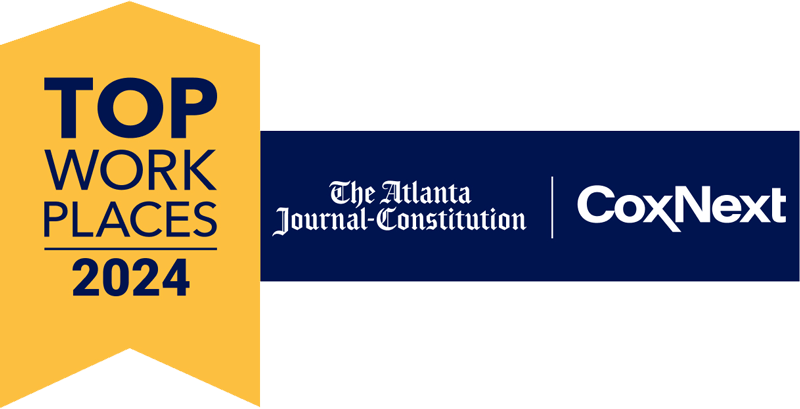
The new year has presented investors with a complex economic and capital markets landscape. In our mid-quarter update, we wish to address several key factors that have recently impacted the investment outlook. These include, but are not limited to, the Federal Reserve's (Fed) recent policy shift, higher-than-expected inflation, significant capital expenditures by Artificial Intelligence (AI) companies, and potential spending and tariff disruptions coming out of Washington. Understanding these elements and how they are being interpreted by market participants is important. Given all of the moving pieces and uncertainty in the outlook, we choose to own investments that we believe are reasonably valued and relatively insulated from the aforementioned events. This gives us a high degree of conviction in our long-term strategy.
The Fed’s recent pivot in monetary policy has introduced a new layer of uncertainty into the financial markets. After a prolonged period of rate hikes aimed at curbing inflation, the Fed shifted towards a more accommodative stance in the second half of 2024. Now, it appears they are in no hurry to further ease policy until more economic data is received. Investors were expecting multiple Fed interest rate reductions in 2025, and while this still could occur, the outlook is less certain.
This is important because historically, interest rate cuts have been associated with positive market performance, as lower borrowing costs can stimulate economic activity. Lower interest rates are generally good for business. However, the context of any potential Fed cuts is critical, and the future pace is now being called into question. Until the Fed sees a softening in labor market conditions and lower inflationary pressures, further reductions will likely be delayed. Atlanta GDP Now, a concurrent reading of economic growth, is just below 3%, indicating a potential continuation of above-trend economic growth that should foster continued job creation and solid consumer demand. It should be noted that GDP growth is a positive force in the economy and reflects an environment that is conducive to continued sales, earnings, and dividend growth, all favorable attributes that support the ownership of stocks.
Inflation has come way down but still remains higher than desired. The Consumer Price Index (CPI) has stalled out at around 3% (depending on the measure of inflation) versus the Fed’s stated target of 2%. It remains to be seen if the inflation progress resumes, and this likely will be dictated by the path and pace of economic growth. To be clear, inflation is not high today, but it is also probably not low enough for the Fed to cut rates further. This bears watching, for we believe achieving consistently low inflation is one of the most important goals of economic policy.
On another note, rapid advancements in AI have led to substantial capital expenditures by major technology companies. The largest AI firms are collectively projected to spend over $1 trillion on AI investments in 2025. The recent news of more efficient and lower-cost AI models has caused some questioning of future spending and potential return on investment in one of the most highly valued and heavily weighted components of the stock market today.
Front of mind for many market participants, tariff disruptions continue to be a source of uncertainty for global markets. Recent announcements of new tariffs on goods from Canada, Mexico, and China have led to immediate market sell-offs, and now Europe appears to be in the crosshairs. Tariffs have the potential to disrupt supply chains, increase costs for businesses, and if enacted, create an environment of heightened uncertainty. Our economy is heavily dependent on consumer demand, and higher prices arising from tariffs could negatively impact overall demand.
In sum, the current environment presents a unique set of challenges and opportunities. While monetary policy uncertainty, persistent inflation, heightened capital expenditures in AI, and tariff disruptions may present challenges for investors, these trends also reinforce the importance of owning high-quality businesses with durable competitive advantages. In an environment where there is the potential for investor expectations to be tempered, we believe that companies with strong balance sheets, consistent cash flows, and reasonable valuations are best positioned to endure a variety of economic and market scenarios. By maintaining our focus on quality and valuation, we remain confident in our ability to manage risk effectively and achieve successful outcomes on behalf of our investors.
The opinions expressed are those of Crawford Investment Team. The opinions referenced are as of the date of publication and are subject to change due to changes in the market or economic conditions and may not necessarily come to pass. Past performance does not guarantee future results. Forward looking statements cannot be guaranteed. Crawford is an investment adviser registered with the U.S. Securities and Exchange Commission. Registration does not imply a certain level of skill or training. More information about Crawford’s investment advisory services can be found in its Form ADV Part 2 and/or Form CRS, which is available upon request. Material presented has been derived from sources considered to be reliable, but the accuracy and completeness cannot be guaranteed. Crawford reserves the right to modify its current investment strategies and techniques based on changing market dynamics or client needs.
CRA-2502-6
The opinions expressed herein are those of Crawford Investment Counsel and are subject to change without notice. This material is not financial advice or an offer to sell any product. Forward-looking statements cannot be guaranteed. This document may contain certain information that constitutes “forward-looking statements” which can be identified by the use of forward-looking terminology such as “may,” “expect,” “will,” “hope,” “forecast,” “intend,” “target,” “believe,” and/or comparable terminology. No assurance, representation, or warranty is made by any person that any of Crawford’s assumptions, expectations, objectives, and/or goals will be achieved. Nothing contained in this document may be relied upon as a guarantee, promise, assurance, or representation as to the future. Crawford Investment Counsel is an investment adviser registered with the U.S. Securities and Exchange Commission. Registration does not imply a certain level of skill or training.
These Perspectives on Macroeconomics
600 Galleria Parkway
Suite 1650
Atlanta, Georgia 30339
Main: 770.859.0045
Fax: 770.859.0049
Email: info@crawfordinvestment.com

Copyright © 2025 | Crawford Investment Counsel, Inc. | All Rights Reserved.
Crawford Investment Counsel, Inc. (“Crawford”) is an independent investment adviser registered under the Investment Advisers Act of 1940, as amended. Registration does not imply a certain level of skill or training. More information about Crawford Investment Counsel, including our investment strategies, fees and objectives, can be found in our Form ADV Part 2A and our Form CRS.
Web Site Development by: Goodwood Consulting
You are now leaving the Crawford Investment Counsel website and accessing the
Crawford Investment Funds website.
You are now leaving theCrawford Investment Funds website
and accessing the Crawford Investment Counsel website.
To help us personalize the site to your needs,
please select one of the following that best describes you.
You are now entering the area of the Crawford Investment Counsel website
that is for Consultant & Investment Professional Use Only.
You are now leaving the Crawford Investment Funds website and accessing the
Ultimus Fund Solutions website.
You are now entering the area of the Crawford Investment Counsel website
that is for Endowment & Foundation Use Only.